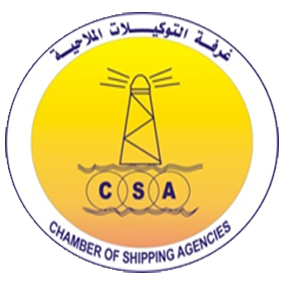Fish farming, also known as aquaculture, represents one of humanity’s oldest and most vital interactions with aquatic life. It encompasses the controlled cultivation of fish, mollusks, crustaceans, and aquatic plants for consumption, restocking, or ornamental purposes. Today, aquaculture supplies nearly half of all fish consumed globally, making it a cornerstone of international food security and economic stability.
Historically, humans have relied on wild fish harvesting, dating back thousands of years. From ancient techniques to modern innovations, fish farming has evolved significantly—integrating scientific advances to meet growing demand while grappling with sustainability challenges. Understanding this evolution reveals how traditional practices laid the groundwork for today’s sophisticated aquaculture systems, which continue to shape global food systems and environmental policies.
Contents
- Historical Foundations of Fish Harvesting and Early Practices
- The Evolution of Fish Farming Techniques Through the Ages
- Modern Fish Farming: Technologies and Practices
- The Role of Modern Fish Farming in Global Food Security
- Case Study: “Fishin’ Frenzy” as a Reflection of Modern Fish Farming’s Impact
- Challenges and Ethical Considerations in Modern Fish Farming
- The Future of Fish Farming: Innovations and Sustainability
- Non-Obvious Insights: Deepening the Understanding of Fish Farming’s Impact
- Conclusion: Reflecting on the Journey from Ancient to Modern Fish Farming
Historical Foundations of Fish Harvesting and Early Practices
Long before modern aquaculture, humans developed ingenious methods to harvest and manage fish populations. One of the earliest documented practices involved using trained cormorants by ancient Egyptians around 3,000 years ago. These birds were employed to catch fish in rivers and lakes, demonstrating an early understanding of animal cooperation for resource extraction. This method required significant skill, as handlers needed to ensure the cormorants did not swallow the catch, allowing fishermen to retrieve the fish efficiently.
Even earlier, archaeological discoveries from East Timor reveal a 42,000-year-old fish hook made from shell, indicating that humans have been crafting specialized tools for fishing for tens of thousands of years. This innovation marked a transition from simple hand-catching techniques to more sophisticated methods, enabling humans to exploit aquatic resources more effectively.
Initially, these practices depended heavily on wild fish populations, with little control over reproduction or population management. Over time, however, humans began experimenting with semi-captive practices—such as small-scale pond cultivation and enclosure of fish—laying the groundwork for structured aquaculture systems.
The Evolution of Fish Farming Techniques Through the Ages
Throughout history, different civilizations contributed to the development of fish farming techniques. The Chinese pioneered pond-based aquaculture around 1,000 BCE, constructing earthen ponds and using natural feed sources to cultivate carp and other freshwater species. Meanwhile, ancient Romans employed intricate aqueduct systems and fish ponds called “piscinae” to rear fish for culinary purposes.
Technological innovations, such as the use of nets, traps, and early aquaculture enclosures, significantly increased fish yields. These systems allowed for better control of environmental conditions and reduced dependence on wild populations. The invention of earthen ponds and the strategic placement of barriers created semi-controlled environments that supported sustainable harvests, demonstrating an early understanding of ecological management.
The impact of these innovations was profound, enabling civilizations to feed larger populations, support trade, and develop regional cuisines centered around farmed fish. These practices also contributed to early notions of sustainability, as managing fish stocks became essential for long-term productivity.
Modern Fish Farming: Technologies and Practices
Recirculating Aquaculture Systems and Offshore Farms
Contemporary fish farming leverages advanced technologies such as recirculating aquaculture systems (RAS), which filter and reuse water within closed-loop setups. These systems minimize water use, reduce environmental impact, and enable year-round production regardless of local climate. Offshore aquaculture farms, located in open ocean sites, capitalize on vast space and natural currents to dilute waste and improve water quality, exemplifying a shift toward more sustainable practices.
Selective Breeding and Genetic Improvements
Modern genetics play a crucial role in enhancing fish growth rates, disease resistance, and feed efficiency. Techniques like selective breeding and genetic modification have resulted in strains such as Atlantic salmon with accelerated growth cycles, reducing the environmental footprint of farming operations. These advancements address challenges of space and resource limitations while boosting productivity.
Environmental Considerations and Sustainable Practices
Sustainability remains a core concern. Modern farms adopt practices like integrated multi-trophic aquaculture (IMTA), which combines species such as fish, algae, and shellfish to recycle nutrients naturally. Additionally, environmental impact assessments and stricter regulations aim to reduce pollution, prevent escapees, and protect surrounding ecosystems, aligning aquaculture with broader conservation goals.
The Role of Modern Fish Farming in Global Food Security
With the global population projected to reach nearly 10 billion by 2050, ensuring sustainable protein sources is vital. Fish provide high-quality, affordable protein, rich in omega-3 fatty acids, essential for human health. Aquaculture now supplies over 50% of the world’s fish consumption, alleviating pressure on wild stocks and reducing overfishing.
Large-scale operations like salmon farms in Norway or shrimp farms in Southeast Asia exemplify how aquaculture can meet rising demand. These farms employ advanced management systems, disease control protocols, and environmentally conscious practices to ensure steady, sustainable output. Their success demonstrates aquaculture’s potential as a keystone in global nutrition strategies.
| Species | Main Regions | Notes |
|---|---|---|
| Salmon | Norway, Chile, Canada | Major commercial species |
| Shrimp | Thailand, Ecuador, Vietnam | High demand in global markets |
| Tilapia | China, Egypt, Indonesia | Popular freshwater fish |
Case Study: “Fishin’ Frenzy” as a Reflection of Modern Fish Farming’s Impact
Video games like the Fishin Frenzy free slot! serve as contemporary cultural artifacts that mirror modern aquaculture principles. While primarily entertainment, such games subtly incorporate themes of fish management, resource optimization, and ecological awareness—core aspects of current fish farming practices.
In “Fishin’ Frenzy,” players experience the thrill of catching fish in a controlled environment, emphasizing the importance of sustainable management and the balance between harvesting and conservation. This gamified reflection highlights how modern fish farms must navigate ecological challenges similar to the virtual experience—such as avoiding pollution, preventing escapees, and maintaining fish health.
Moreover, the game’s popularity contributes to raising awareness about fish-related resources, fostering a cultural understanding that complements scientific and policy efforts to promote sustainable aquaculture worldwide.
Challenges and Ethical Considerations in Modern Fish Farming
Environmental Impacts
Despite technological advances, aquaculture faces significant environmental challenges. Pollution from excess nutrients, antibiotics, and chemicals can degrade water quality, leading to algal blooms and habitat destruction. Escapees from farms can introduce non-native species, disrupting local ecosystems and competing with wild fish populations. For example, the escape of Atlantic salmon from farms in Norway has raised concerns about genetic dilution of wild stocks.
Ethical Concerns
Fish welfare is increasingly recognized as a vital issue. Crowded conditions, handling stress, and disease management pose ethical questions about the quality of life for farmed fish. Advances in fish welfare science advocate for improved living conditions, humane handling, and biosecurity measures to prevent disease outbreaks, underscoring the need for ethical frameworks in aquaculture development.
Economic and Social Implications
Aquaculture can bring economic opportunities to rural communities but also risks marginalization if profits concentrate in large corporations. Ensuring fair labor practices, supporting local small-scale farmers, and preventing environmental degradation are critical for sustainable socio-economic development.
The Future of Fish Farming: Innovations and Sustainability
Emerging Technologies
Cutting-edge developments include algae-based feeds that reduce reliance on wild fish for fishmeal, automation powered by artificial intelligence for monitoring and controlling farm conditions, and genetic technologies to improve stock resilience. These innovations aim to enhance efficiency while minimizing environmental impact.
Potential for Closed-Loop and Multi-Trophic Systems
Closed-loop systems recycle water and waste, drastically reducing pollution. Integrated multi-trophic aquaculture (IMTA) combines species such as fish, shellfish, and seaweed in mutually beneficial environments, mimicking natural ecosystems and promoting sustainability. Such systems exemplify how aquaculture can evolve into a more regenerative practice.
Policy and Global Cooperation
International standards, certification schemes, and collaborative policies are vital to ensure responsible growth. Initiatives like the FAO’s Code of Conduct for Responsible Fisheries promote sustainable practices and help harmonize regulations across borders, enabling the industry to meet future demands ethically and sustainably.
Non-Obvious Insights: Deepening the Understanding of Fish Farming’s Impact
Historical Lessons Applied Today
Ancient fishing practices, such as the Egyptians’ use of trained animals or the Chinese pond systems, exemplify early ecological understanding. Modern aquaculture continues to draw lessons from these practices, emphasizing the importance of working with natural processes rather than against them. For instance, integrated systems that combine different species leverage ecological relationships for greater sustainability.
Interconnection with Climate and Ocean Health
Fish farming significantly influences and is affected by climate change. Rising sea temperatures, ocean acidification, and extreme weather events threaten aquaculture productivity. Conversely, responsible practices—like reducing carbon footprints and restoring habitats—can help mitigate these impacts, illustrating the interconnectedness of fish farming and ocean health.
Cultural Significance of Fishing Methods
Traditional fishing methods reflect cultural identities and ecological knowledge across civilizations. From the Egyptian use of trained cormorants to Asian fish ponds, these practices influence modern sustainable techniques. Recognizing this cultural heritage fosters respect for indigenous knowledge and encourages innovative, culturally sensitive approaches to aquaculture.
Reflecting on the Journey from Ancient to Modern Fish Farming
The evolution of fish farming highlights a





